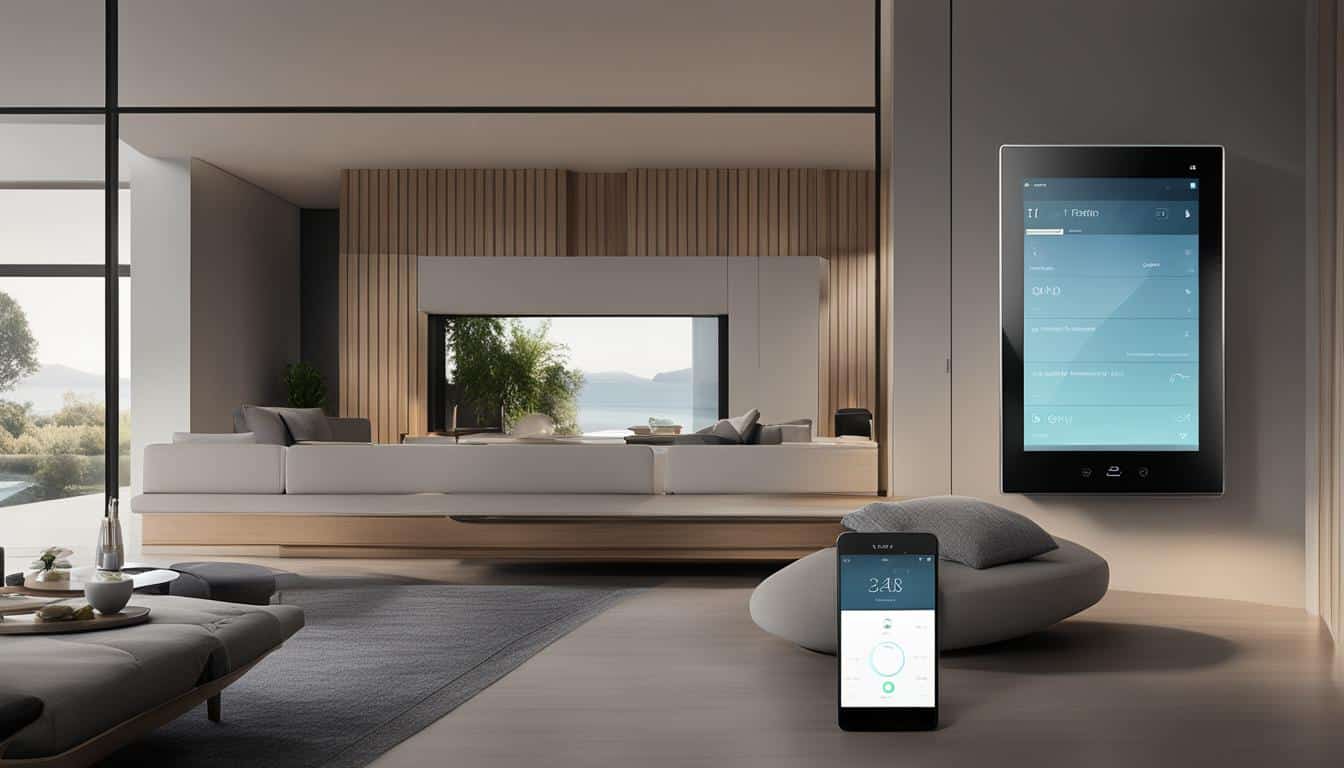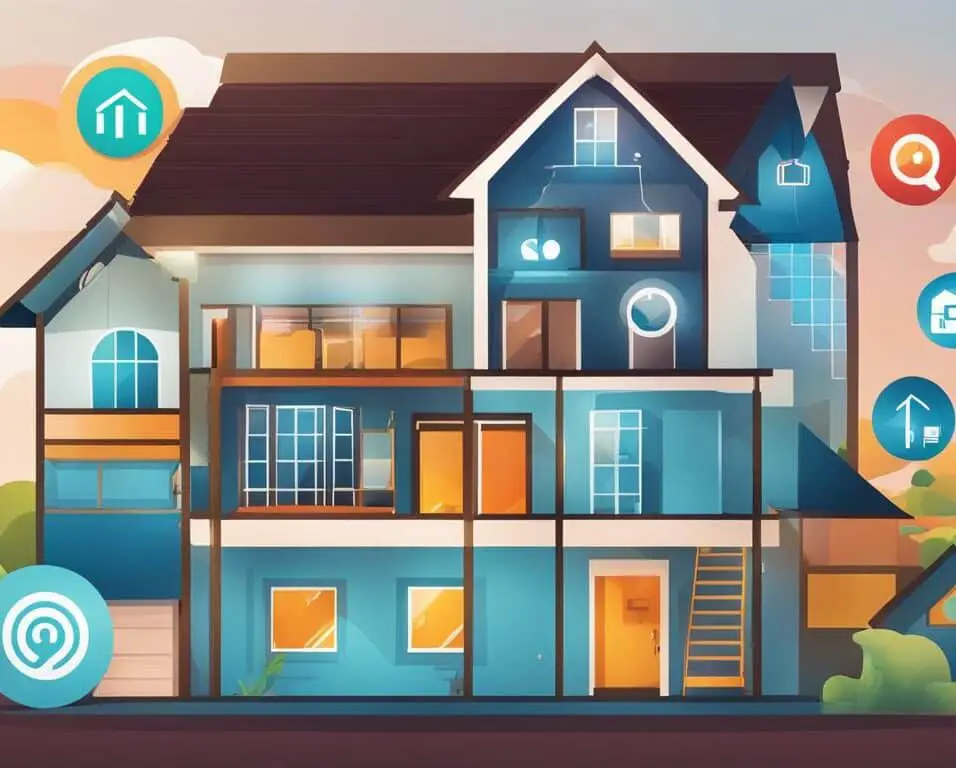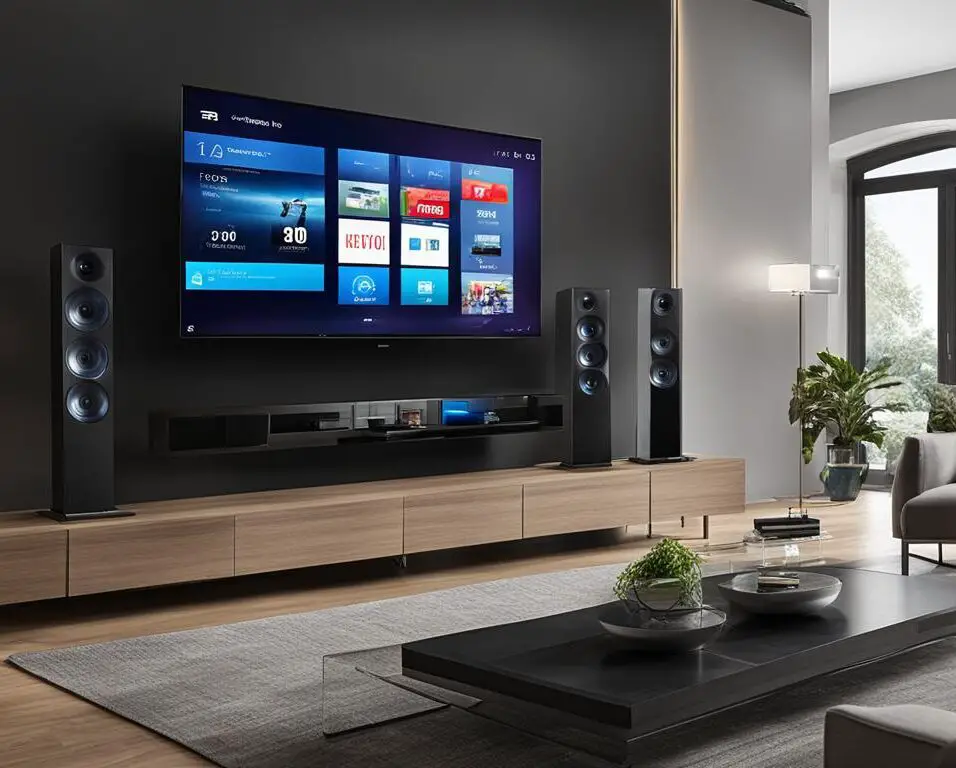The Latest Trends in Smart Home Interfaces
Smart home technology has revolutionized the way we live and interact with our living spaces. With the demand for smart homes on the rise, people are actively seeking out homes equipped with smart features. The integration of smart devices and advancements in artificial intelligence (AI) have made smart homes more convenient and sustainable.
One of the top trends in smart home interfaces is seamless connectivity among smart home devices. This allows different devices to communicate with each other for enhanced convenience. Voice control technology and virtual assistants have also become common in smart homes, providing hands-free control of various devices. Additionally, touchless technology, such as touchless doorbells, has gained popularity due to the need for improved hygiene and cleanliness.
Smart thermostats and energy-efficient lighting systems contribute to energy conservation and environmental sustainability in smart homes. Furthermore, health tech features like air quality sensors and smart toilets enhance well-being and safety.
The future of smart home interfaces holds exciting possibilities, including further customization options and the integration of Internet of Things (IoT) technologies. IoT integration in smart home interfaces enables seamless communication and automation between devices, creating smarter homes.
Key Takeaways:
- Trends in smart home interfaces include seamless connectivity and voice control technology.
- Touchless technology, such as touchless doorbells, is becoming popular for improved hygiene.
- Smart thermostats and energy-efficient lighting systems contribute to energy conservation.
- Health tech features like air quality sensors and smart toilets improve well-being and safety.
- The future of smart home interfaces includes further customization and IoT integration.
Integration: Seamless Connectivity
In today’s modern smart homes, homeowners expect a fully integrated system that allows different devices to communicate with each other seamlessly. This integration of smart devices creates a connected ecosystem where homeowners can control and manage their entire home from a single interface, enhancing convenience and efficiency.
One example of seamless connectivity in smart homes is the integration of Google Home speakers with lighting systems. With this integration, homeowners can control their lighting throughout the house using voice commands or a smartphone app. Whether it’s turning on/off lights, adjusting brightness, or changing color settings, the fully integrated system provides a cohesive and intuitive user experience.
The ease of use of smart home devices has significantly improved, reducing the barrier to entry for homeowners. Now, with just a smartphone and a Wi-Fi connection, homeowners can connect and control their smart devices effortlessly. This level of seamless connectivity not only enhances the user experience but also contributes to the overall efficiency and energy conservation in smart homes.

Enhanced Convenience and Efficiency
By integrating smart devices, homeowners can enjoy enhanced convenience and efficiency in their daily lives. For example, a fully integrated smart home system can automate routine tasks such as adjusting thermostats based on occupancy, turning off lights when no one is in the room, or even starting the coffee maker in the morning.
Moreover, seamless connectivity allows homeowners to create personalized scenes or routines. With just a single command, multiple smart devices can work together to create the perfect ambiance for different activities, such as a movie night or a romantic dinner. This level of customization elevates the smart home experience and makes everyday life more enjoyable.
In conclusion, seamless connectivity through the integration of smart devices is a key trend in modern smart homes. It not only provides enhanced convenience and efficiency but also contributes to a more personalized and enjoyable living experience. With the continuous advancements in technology, we can expect further innovations in seamless connectivity, making smart homes even smarter and more intuitive.
Artificial Intelligence and Internet of Things (IoT): Smarter Homes
As smart home technology continues to advance, the integration of artificial intelligence (AI) and the Internet of Things (IoT) is revolutionizing the way we interact with our living spaces. AI-powered voice assistants like Amazon Alexa and Siri have become common household names, providing homeowners with the convenience of hands-free control over various devices.
The IoT enables seamless communication and automation between smart devices, creating a truly interconnected home environment. With advancements in IoT technology, smart kitchens and smart bathrooms are emerging as key areas of innovation. Connected appliances and fixtures optimize energy consumption, while also providing valuable insights into health and hygiene.
The Future of Smart Kitchens
In smart kitchens, AI-powered devices can assist with meal preparation, recipe recommendations, and even inventory management. Smart refrigerators can keep track of food items, their expiration dates, and suggest recipes based on available ingredients. This not only reduces food waste but also simplifies the cooking process for homeowners.
Additionally, smart ovens and cooktops equipped with AI technology can provide precise temperature control and cooking recommendations, ensuring perfectly cooked meals every time. Integrated smart home systems allow for seamless connectivity with other kitchen appliances, such as coffee makers and dishwashers, creating a truly automated kitchen experience.
Enhancing Safety and Efficiency in Smart Bathrooms
In smart bathrooms, IoT advancements enable features like smart toilets and water-saving fixtures. AI-powered sensors can monitor air quality and regulate ventilation systems, ensuring a healthier environment. Connected shower systems can provide personalized water temperature and pressure settings, promoting comfort and water conservation.
| Smart Kitchen Features | Smart Bathroom Features |
|---|---|
| AI-powered recipe recommendations | Smart toilets with hygiene features |
| Inventory management in smart refrigerators | Water-saving fixtures |
| Precise temperature control in smart ovens | Air quality monitoring and ventilation |
| Seamless connectivity with other kitchen appliances | Personalized shower settings |
The integration of AI and IoT in smart homes not only enhances convenience but also contributes to energy conservation and improved well-being. With the advancement of technology, we can expect even smarter homes in the future, where AI-powered devices and IoT connectivity will continue to redefine our living spaces.

Touchless Tech: Ensuring Higher Security
As smart homes continue to evolve, touchless technology has emerged as a crucial factor in ensuring higher security. With an increased focus on hygiene and cleanliness, touchless solutions have gained significant traction in the realm of home security.
One notable example is touchless doorbells, which allow visitors to announce their presence without the need for physical contact. This not only minimizes the risk of germ transmission but also provides an added layer of convenience for homeowners.
In addition to touchless doorbells, smart home devices can now be controlled and managed through mobile apps, eliminating the need for physical contact and improving overall hygiene. Whether it’s adjusting the thermostat, turning off lights, or monitoring security cameras, homeowners can now have complete control at their fingertips.
With its potential for additional applications, touchless technology is poised to revolutionize the way we maintain optimal hygiene within our homes. From touchless faucets to voice-activated commands, these innovations are paving the way for a safer, more secure smart home experience.
FAQ
What are some of the latest trends in smart home interfaces?
Some of the latest trends in smart home interfaces include voice-controlled interfaces, artificial intelligence integration, responsive design, and customization options.
Why is seamless connectivity important in smart homes?
Seamless connectivity allows different smart devices to communicate with each other, enhancing convenience and efficiency in managing various aspects of a smart home system.
How does artificial intelligence contribute to smarter homes?
Artificial intelligence powers voice assistants like Amazon Alexa and Siri, allowing hands-free control of smart devices. It also enables automation and optimization of energy consumption in smart kitchens and bathrooms.
What is the significance of touchless technology in smart home security?
Touchless technology, such as touchless doorbells and mobile app control, enhances home security by minimizing physical contact and reducing the risk of germ transmission.
How can smart home devices be controlled and managed?
Smart home devices can be controlled and managed through mobile apps, providing a convenient and hygienic way to interact with the smart home system.
Source Links
- https://www2.deloitte.com/us/en/insights/industry/telecommunications/connectivity-mobile-trends-survey/2023/smart-home-industry-adoption-trend.html
- https://www.laloftblog.com/2023/06/28/smart-home-technology-an-exploration-of-the-latest-trends-and-their-impact-on-daily-life/
- https://www.hdlautomation.com/Articles_100000161143363.html








